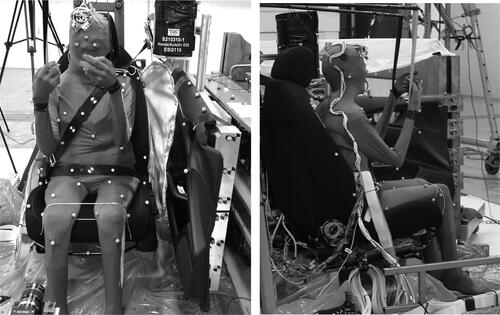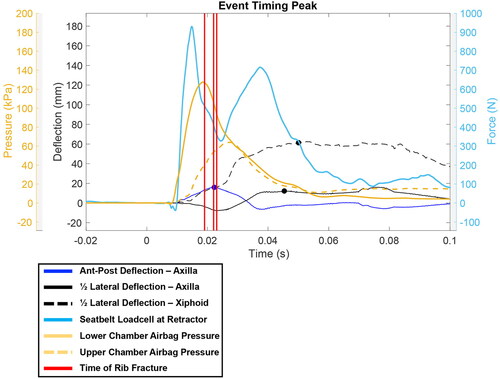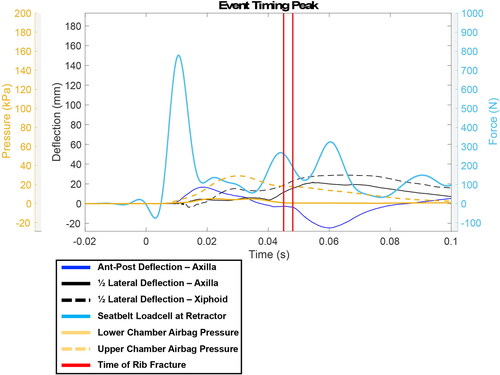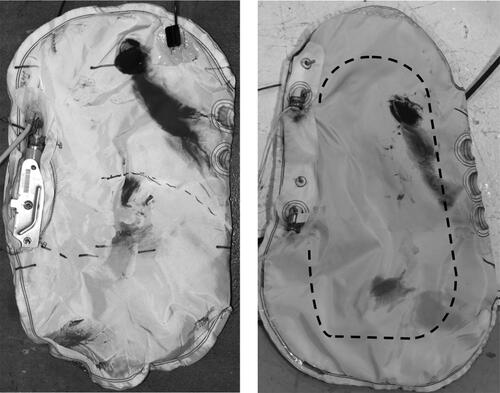Figures & data
Table 1. Subject information.
Figure 1. Pretest photos showing the PMHS in a vehicle seat with standard three-point restraint system, side airbag with a single fold, and the door liner attached to the four ASIS pneumatic actuators.

Figure 4. Phase I exemplar event timing plot with the red lines representing the time at which the first three ribs fractured, the last of which equates to thoracic AIS = 3

Figure 5. Phase II exemplar event timing plot with the red lines representing the time at which the first three ribs fractured, the last of which equates to thoracic AIS = 3. In this example two ribs fractured at 44 msec so the lines are on top of one another.

Table 2. Documented rib injuries and resulting thoracic AIS scores (AIS 2015 Version 7).
Table 3. Deflections from axilla-level chestband.
Table 4. Compression at both axillary and xiphoid process levels.


